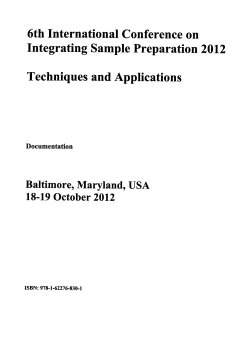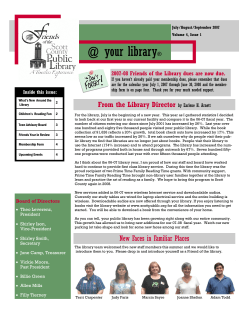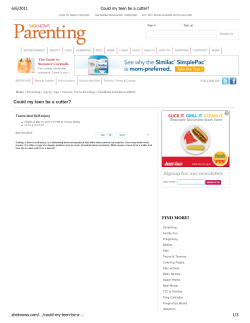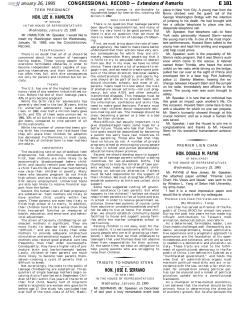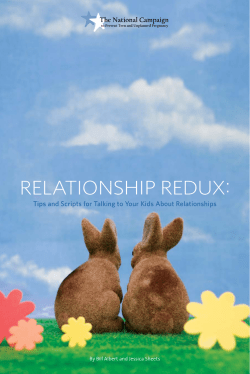
Teacher’s Pet Publications
Teacher’s Pet Publications a unique educational resource company since 1989 Dear Prospective Customer: The pages which follow are a few sample pages taken from the LitPlan TeacherPack™ title you have chosen to view. They include: • Table of Contents • Introduction to the LitPlan Teacher Pack™ • first page of the Study Questions • first page of the Study Question Answer Key • first page of the Multiple Choice Quiz Section • first Vocabulary Worksheet • first few pages of the Daily Lessons • a Writing Assignment • first page of the Extra Discussion Questions • first page of the Unit Test Section If you wish to see a sample of an entire LitPlan Teacher Pack,™ go to the link on our home page to view the entire Raisin in the Sun LitPlan Teacher Pack.™ Since all of the Teacher Packs™ are in the same format, this will give you a good idea of what to expect in the full document. If you have any questions or comments, please do not hesitate to contact us; we pride ourselves on our excellent customer service, and we love to hear from teachers. Thank you for taking the time to visit our web site and look at our products! Sincerely yours, Jason Scott, CEO Teacher’s Pet Publications Toll-Free: 800-932-4593 Fax: 888-718-9333 TEACHER’S PET PUBLICATIONS LITPLAN TEACHER PACK™ for Tears of a Tiger based on the book by Sharon M. Draper Written by Christina Wulff © 2009 Teacher’s Pet Publications All Rights Reserved ISBN 978-1-60249-126-7 Item No. 306559 TABLE OF CONTENTS - Tears of a Tiger About The Author 5 Introduction 7 Unit Objectives 9 Reading Assignment Sheet 10 Unit Outline 11 Study Questions (Short Answer) 15 Quiz/Study Questions (Multiple Choice) 25 Pre-reading Vocabulary Worksheets 47 Lesson One (Introductory Lesson) 63 Raising Awareness Project 65 Non-Fiction Assignment Sheet 69 Oral Reading Evaluation Sheet 75 Writing Assignment 1 78 Writing Assignment 2 87 Extra Writing Assignments/Discussion ?s 90 Writing Assignment 3 101 Vocabulary Review Activities 103 Unit Review Activities 104 Unit Tests 109 Unit Resource Materials 165 Vocabulary Resource Materials 185 ABOUT THE AUTHOR Sharon M. Draper Sharon Draper was born in Cleveland, Ohio. Her parents stressed the importance of reading and a strong education, resulting in Draper becoming an excellent student and a self-proclaimed bookworm. Draper was awarded the National Merit Scholarship based on her high SAT scores and headed to Pepperdine University to fulfill her childhood dream of becoming a teacher. She graduated with a degree in English and moved back to Ohio to obtain her master's degree at Miami University of Ohio. As a teacher in Cincinnati, Ohio, Draper was known for the high expectations she held for all her students. The senior research paper she assigned was so tough, it became legendary. Students who survived the "Draper Paper" were awarded a t-shirt. After years of encouraging her students to submit their stories and poems to writing contests, a student approached Draper and told her she should do the same. Draper followed through with the challenge and was awarded first place for her short story "One Small Torch" in an annual contest held by Ebony magazine. From there, Draper's writing career began. Draper sought to write literature that teens could relate to and enjoy. Since then she has published several young adult novels and children's books, receiving multiple awards for her writing. Tears of a Tiger is the first book in the Hazelwood High trilogy. The main character in the second title in the series, Forged by Fire, is Gerald Nickelby, one of Andy's basketball teammates. Darkness Before Dawn follows Andy's girlfriend, Keisha, through her senior year of high school. Major Works Tears of a Tiger Forged by Fire Darkness Before Dawn Romiette and Julio Double Dutch The Battle of Jericho Copper Sun November Blues Fire from the Rock We Beat the Street Teaching from the Heart Not Quite Burned Out But Crispy Around the Edges Ziggy and the Black Dinosaurs: The Buried Bones Mystery Ziggy and the Black Dinosaurs: Lost in the Tunnel of Time Ziggy and the Black Dinosaurs: Shadows of Caesar's Creek Ziggy and the Black Dinosaurs: The Space Mission Adventure Ziggy and the Black Dinosaurs: The Backyard Zoo Adventure Ziggy and the Black Dinosaurs: Stars and Sparks on Stage Awards National Teacher of the Year Five-time winner of the Coretta Scott King Literary Award New York Times bestselling author Excellence in Education Award 4 Milken Family Foundation National Educator Award YWCA Career Woman of Achievement Dean's Award from Howard University School of Education Pepperdine University Distinguished Alumnus Award Marva Collins Education Excellence Award Ohio Pioneer in Education by the Ohio State Department of Education Governor's Educational Leadership Award 5 INTRODUCTION Tears of a Tiger This LitPlan has been designed to develop students' reading, writing, thinking, and language skills through exercises and activities related to Tears of a Tiger. It includes twenty-two lessons, supported by extra resource materials. The introductory lesson prompts students to think about tragic accidents with teens, one of the topics discussed in the novel. The reading assignments are approximately thirty pages each; some are a little shorter while others are a little longer. Students have approximately 15 minutes of pre-reading work to do prior to each reading assignment. This pre-reading work involves reviewing the study questions for the assignment and doing some vocabulary work for selected vocabulary words they will encounter in their reading. The study guide questions are fact-based questions; students can find the answers to these questions right in the text. These questions come in two formats: short answer or multiple choice. The best use of these materials is probably to use the short answer version of the questions as study guides for students (since answers will be more complete), and to use the multiple choice version for occasional quizzes. The vocabulary work is intended to enrich students' vocabularies as well as to aid in the students' understanding of the book. Prior to each reading assignment, students will complete a two-part worksheet for selected vocabulary words in the upcoming reading assignment. Part I focuses on students' use of general knowledge and contextual clues by giving the sentence in which the word appears in the text. Students are then to write down what they think the words mean based on the words' usage. Part II nails down the definitions of the words by giving students dictionary definitions of the words and having students match the words to the correct definitions based on the words' contextual usage. Students should then have an understanding of the words when they meet them in the text. After each reading assignment, students will go back and formulate answers for the study guide questions. Discussion of these questions serves as a review of the most important events and ideas presented in the reading assignments. After students complete reading of the work, there is a vocabulary review lesson which pulls together all of the fragmented vocabulary lists for the reading assignments and gives students a review of all of the words they have studied. Following the vocabulary review, a lesson is devoted to the extra discussion questions/writing assignments. These questions focus on interpretation, critical analysis and personal response, employing a variety of thinking skills and adding to the students' understanding of the novel. There is a Raising Awareness Project in this unit. This project requires students to conduct research on a topic discussed in the novel and create a way to help increase awareness throughout the school community on the chosen subject. There are three writing assignments in this unit, each with the purpose of informing, persuading, or expressing personal opinions. The first writing assignment asks students to mimic the style of writing found in the novel by conveying information through various perspectives and mediums. The second writing assignment asks students to explain the importance of good communication between parents and teens. In the third assignment students must persuade a fellow teen to get help with a problem he or she is facing. 6 There is a non-fiction reading assignment. Students must read non-fiction articles, books, etc. to gather information about their themes discussed in the novel. The review lesson pulls together all of the aspects of the unit. The teacher is given four or five choices of activities or games to use which all serve the same basic function of reviewing all of the information presented in the unit. The unit test comes in two formats: multiple choice or short answer. As a convenience, two different tests for each format have been included. There is also an advanced short answer unit test for advanced students. There are additional support materials included with this unit. The Unit Resource Materials section includes suggestions for an in-class library, crossword and word search puzzles related to the novel, and extra worksheets. There is a list of bulletin board ideas which gives the teacher suggestions for bulletin boards to go along with this unit. In addition, there is a list of extra class activities the teacher could choose from to enhance the unit or as a substitution for an exercise the teacher might feel is inappropriate for his/her class. Answer keys are located directly after the reproducible student materials throughout the unit. The Vocabulary Resource Materials section includes similar worksheets and games to reinforce the vocabulary words. The level of this unit can be varied depending upon the criteria on which the individual assignments are graded, the teacher's expectations of his/her students in class discussions, and the formats chosen for the study guides, quizzes and test. If teachers have other ideas/activities they wish to use, they can usually easily be inserted prior to the review lesson. The student materials may be reproduced for use in the teacher's classroom without infringement of copyrights. No other portion of this unit may be reproduced without the written consent of Teacher's Pet Publications, Inc. 7 UNIT OBJECTIVES Tears of a Tiger 1. Through reading the novel Tears Of A Tiger, students will learn about the way choices made by teens can impact a community and alter the lives of others. 2. Students will learn about some problems teens face and effective ways to handle difficult situations. 3. Students will demonstrate their understanding of the text on four levels: factual, interpretive, critical, and personal. 4. Students will make connections with the material in the text and apply the lessons learned to their lives. 5. Students will be given the opportunity to practice reading aloud and silently to improve their skills in each area. 6. Students will answer questions to demonstrate their knowledge and understanding of the main events and characters in Tears of a Tiger as they relate to the author's theme development. 7. Students will enrich their vocabularies and improve their understanding of the novel through the vocabulary lessons prepared for use in conjunction with the novel. 8. Students will demonstrate the ability to write effectively to inform by developing and organizing facts to convey information. Students will demonstrate the ability to write effectively to persuade by selecting and organizing relevant information, establishing an argumentative purpose, and by designing an appropriate strategy for an identified audience. Students will demonstrate the ability to write effectively to express personal ideas by selecting a form and its appropriate elements. 9. Students will read aloud, report, and participate in large and small group discussions to improve their public speaking and personal interaction skills. 8 READING ASSIGNMENTS Tears of a Tiger Date Assigned Assignment Assignment 1 Crash, Fire, Pain- "Hey, Coach! Can We Talk?" Assignment 2 Sad Songs, Juicy Gossip-Ferocious Frustration Assignment 3 Female Frustration-Black on White Assignment 4 Accepting Fear-The Importance of Friendship Assignment 5 Concern and Denial-Slipping Away Assignment 6 A Father's Dream-End of Novel Whole Book Whole Book 9 Completion Date UNIT OUTLINE Tears of a Tiger 1 2 3 4 5 Introduction Activity Project Assignment PVR1 Study Questions 1 Vocabulary 1 Character Cut Outs Non-fiction Assignment PVR2 Study Questions 2 Vocabulary 2 Inferences/Venn Diagram Teen Psychology Cause & Effect PVR3 6 7 8 9 10 Study Questions 3 Vocabulary 3 Oral Reading PVR4 Speaker Writing #1 Study Questions 4 Vocabulary 4 Discrimination Poetry & Perspectives PVR5 11 12 13 14 15 Study Questions 5 Vocabulary 5 Andy's Personalities PVR6 Study Questions 6 Vocabulary 6 Cause & Effect Timeline Talk Show Writing #2 16 17 18 19 20 Extra Discussion Questions Extra Discussion Questions Cont. Letter to Author Project Presentations Unit Evaluation Writing #3 Vocabulary Review 21 22 Unit Review Unit Test Key: P = Preview Study Questions V = Vocabulary Work R = Read 10 LESSON ONE Objectives 1. 2. 3. 4. To introduce the Tears of a Tiger unit To distribute books, study questions, and other related materials To preview the vocabulary and study questions for Assignment 1 To begin Assignment 1 Activity #1 Find a newspaper or magazine article about a teen or group of teens who died while in high school. Try to find an article that tells about the event and also gets the perspectives of other students, teachers, and family members to show how the event of a teen death affects more than those directly involved. Topics to look for include drugs, alcohol, racing/reckless driving, car accidents, suicide, etc. Often times teen magazines will do a feature about an event like this, so be sure to look in Seventeen, Teen People, YM, and other teen-oriented magazines for an article as well as in local and national newspapers. If possible, try to find an article about a teen death near your school to help create a larger impact on your students. Make copies of the article to hand out to your students. Have students take turns reading out loud while others follow along. Once you have completed the article, ask your students to think about how the death of the teen impacted others in the school and community. Spend some time talking about why the death of a young person can often times be more difficult to deal with than the death of an older adult. Transition: Once you have discussed the way teen deaths impact the community and how they are often very difficult to deal with, tell your students they will be reading a book called Tears of a Tiger. Explain to students this book is written from several different points of view and deals with a deadly car accident and the reaction of the students at Hazelwood High School. Activity #2 Distribute the Raising Awareness project assignment sheet. Discuss the directions in detail. Note: Some schools may allow for these projects to be displayed around the school to raise awareness about serious teen issues. If your school allows this, select your best project to display around school. If not, display the projects in your room. Activity #3 Distribute the materials students will use in this unit. Explain in detail how students are to use these materials. Study Guides Students should read the study guide questions for each reading assignment prior to beginning the reading assignment to get a feeling for what events and ideas are important in the section they are about to read. After reading the section, students will (as a class or individually) answer the questions to review the important events and ideas from that section of the book. Students should keep the study guides as study materials for the unit test. Review the study questions for Assignment 1 while you're looking at the study guides. Vocabulary Prior to reading a reading assignment, students will do vocabulary work related to the section of the book they are about to read. Following the completion of the reading of the book, there will be a vocabulary review of all the words used in the vocabulary assignments. Students should keep their vocabulary work as study materials for the unit test. Do Assignment 1 together orally to show students how to do the vocabulary worksheets. 61 WRITING ASSIGNMENT #1 Tears of a Tiger PROMPT Andy and his friends are aware that drinking and driving is dangerous, but they still make the decision to get behind the wheel after drinking illegally. As a reader, you are able to see how this bad decision affects so many others in the school and surrounding community through the multiple perspectives the writer gives. Your assignment is to mimic the author's writing style by using a variety of speakers and media to address the issue of why teens sometimes overlook the consequences and follow through with a bad decision. PREWRITING Think about the poor decisions teens sometimes make despite knowing the negative consequences. Make a short list of a few examples of harmful decisions teens make, even though they often know better (drinking and driving, drug use, racing, etc). Next, determine which media you will use in your writing. You may want to use examples found in the book like overheard conversations, diary entries, and school assignments or use more contemporary media like blogs, instant messages, text messages, or comments on online profiles. You will also need to create a few characters of your own to talk back and forth about your assigned topic. DRAFTING This writing assignment will not look like a traditional essay. You will need to use at least three different media to address the assigned topic, with a minimum of five speakers. Be sure to clearly label what format you are using and designate where each section begins and ends. As you are writing, remember to use first person point of view, but from the eyes of the characters you created. You will want to use details and to make your writing as authentic as possible. You should also provide your readers with insights into the topic so they are able to understand why you feel teens make poor decisions at times. Remember to use your different speakers to make strong points to support your personal opinion. PROMPT When you finish the rough draft of your composition, ask a student who sits near you to read it. After reading your rough draft, he/she should tell you what he/she liked best about your work, which parts were difficult to understand, and ways in which your work could be improved. Reread your paper considering your critic's comments, and make the corrections you think are necessary. Ask your classmate what he/she thought of each of the characters/events you chose for your assignment. PROOFREADING Do a final proofreading of your paper double-checking your grammar, spelling, organization, and the clarity of your ideas. 76
© Copyright 2025



